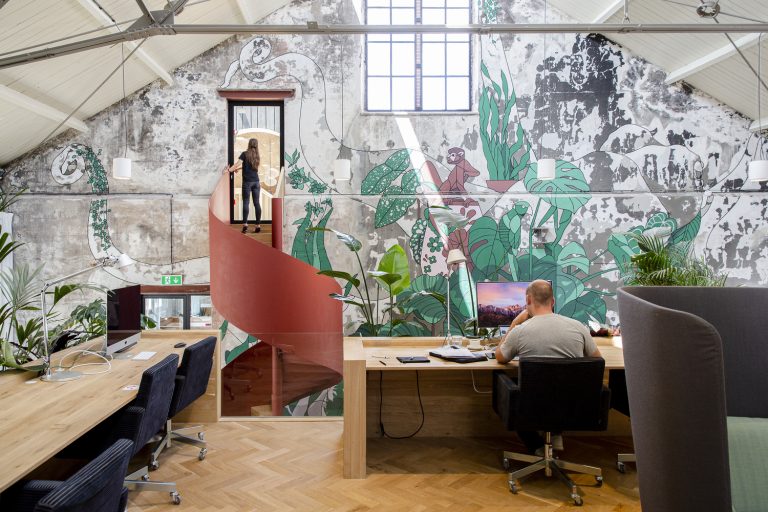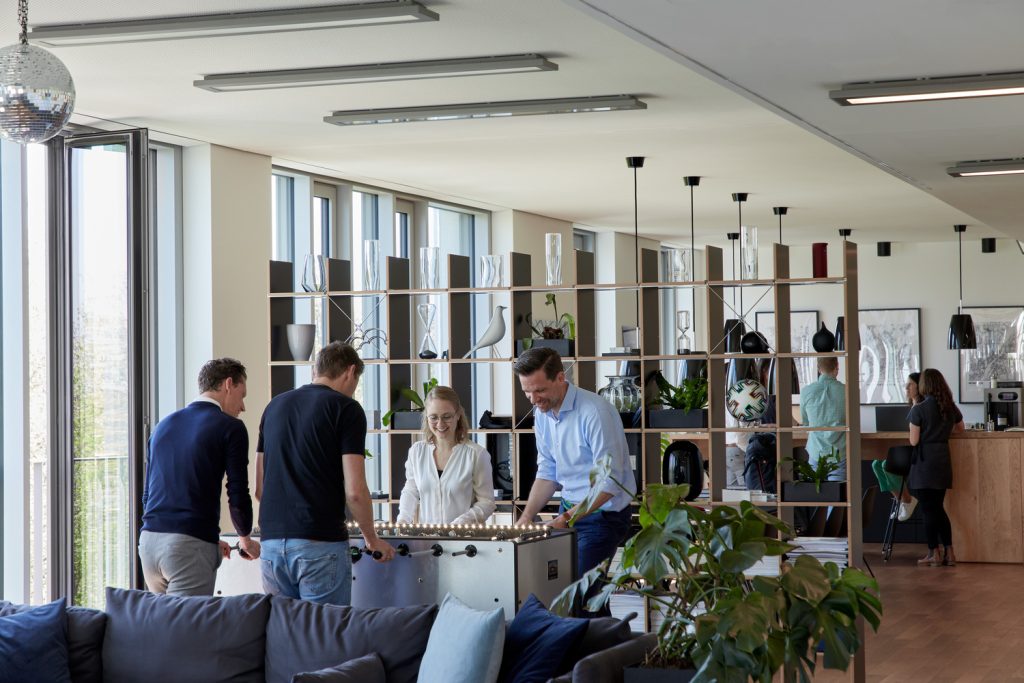The Impact of Office Environment Design on Mood, Productivity, and the Future of Hybrid Work

If you haven’t understood it by now, yes, we at SketchLabs have a particular fondness for office environment design and layout. But there is something more than just the aesthetic that blows us away, it’s how office design can affect our mood and even productivity.
The office environment we work in plays a significant role in shaping our mood and productivity. It’s not just about the physical space; it’s about the ambience, the layout, and the elements that surround us. As the way we work continues to evolve, so too must our office environments.
In this article, we will explore how the things around us affect our mood and productivity, what can be done to improve office environment design, and how this design can adapt to the growing trend of hybrid work models.
The Influence of Office Environment on Mood and Productivity
- Lighting: Adequate lighting is essential in an office space. Natural light, in particular, can improve mood and boost productivity. It helps regulate our circadian rhythms, making us feel more alert and focused during the day. On the other hand, harsh fluorescent lighting can lead to eye strain and fatigue, negatively impacting mood and productivity.
One of the best tips we received about lighting, and mixing natural with daylight is to bring in light specialist teams. They can advise where to put artificial light and even things like SAD lights to help combat seasonal depression. - Colour Scheme: The colours used in an office can have a profound impact on our emotions. Calming colours like blue and green can promote a sense of tranquillity and focus, while vibrant colours like red and yellow can energise and stimulate creativity. A well-thought-out colour scheme can create the desired atmosphere.
Of course, you’re not expected to have multi-coloured offices, but colour layout is important. Think about where you want bursts of colour and tie them into your workflow zones. - Layout and Furniture: The arrangement of desks, chairs, and communal spaces can encourage collaboration or hinder it. A flexible layout with a mix of open spaces and private areas can cater to different work styles and moods. Ergonomic furniture can also contribute to comfort and productivity.
If you’re working in a communal office with other businesses, sometimes a communal desk is a great way to break down social barriers and invite a friendlier atmosphere. Equally, if businesses are competing, this can be an issue. So think about layout with your team and there bonds in mind. - Noise Levels: Excessive noise can be distracting and stressful. Noise-cancelling solutions, acoustic panels, and designated quiet zones can help create a more peaceful working environment.
Communal music or a radio is a thing of the past. People need focused environments, provide workplace headphones and keep phone calls to scheduled times and even locations if need be. - Nature and Greenery: The presence of plants and natural elements can have a calming effect and improve air quality. A connection to nature within the office can promote well-being and boost mood.

Improving Office Environment Design
- Flexible Workspaces: To cater to different work styles, provide a variety of spaces, including open workstations, private offices, meeting rooms, and relaxation areas. This allows employees to choose the environment that best suits their task at hand.
In co-working offices, this is something that is becoming more and more utilised. Create zones for specific things and then get your team acclimatised to these changes. - Personalisation: Allowing employees to personalise their workspace can enhance their sense of ownership and well-being. Encourage the use of personal items, art, and decor to make the office feel more like home.
Have a guide to what is acceptable and not acceptable though. Working in slippers for example is a no-no (Health & Safety). Personalisation should be about creating good office environments and not just making it your own home. - Technology Integration: Ensure that the office is equipped with up-to-date technology that facilitates communication and collaboration, making it easier for remote and in-person workers to interact seamlessly.
From Google Drives to Air Dropping items, you want to make it easy for employees to work from wherever, and especially so in the office from different devices. - Wellness Initiatives: Promote physical and mental well-being by offering amenities such as standing desks, relaxation rooms, yoga spaces, and access to healthy snacks.
Many organisations now have relationships with local gyms, but even getting someone in once a week to help teach mediation or office yoga is worth the investment. - Sustainability: Design offices with sustainability in mind. Use eco-friendly materials, incorporate energy-efficient lighting, and implement recycling programs to reduce the environmental impact of the workspace.
Hybrid Office Design for the Future
As hybrid work models become more prevalent, office environments must adapt to accommodate both in-person and remote workers. Here’s how office design can support this shift:
- Collaboration Technology: Invest in advanced video conferencing and collaboration tools to ensure that remote employees can actively participate in meetings and discussions.
- Flexible Scheduling: Create a system where employees can reserve office space when needed, allowing for a dynamic mix of in-person and remote work.
- Reimagined Meeting Spaces: Design meeting rooms to facilitate hybrid meetings, with high-quality audio and video equipment that ensures a seamless experience for all participants.
- Wellness and Ergonomics: Consider the well-being of remote workers by providing guidance on setting up ergonomic home offices and offering resources for mental health support.
Office environment design has a profound impact on our mood, productivity, and overall well-being. By carefully considering elements such as lighting, layout, and personalisation, organisations can create a workspace that inspires and supports their employees. As we navigate the evolving landscape of work, the adaptability of office design will be key to fostering collaboration, innovation, and employee satisfaction in hybrid work models.